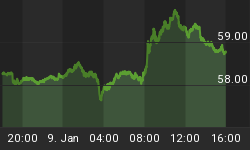Boosted in large part by a $1.5 trillion tax package, the U.S. economy roared to a 4.1-percent annualized growth rate during the second quarter, its best showing in nearly four years and the strongest among industrialized nations.
As usual, president Trump was quick to take some credit, "We'll take anything with a four in front," he jubilated at an event in Iowa. But his victory lap might have been premature.
Experts are warning that the recent performance is as good as it might get.
A recent Reuters poll of more than 100 economists taken August 13-21 shows that they expect the economy to lose momentum quite dramatically and end next year growing at less than half last term’s clip.
Diminishing Tax Effects and Trade Wars
Their projections appear to be in the ballpark considering that the U.S. economic growth has already been forecast to slow-down to three percent during the current quarter and 2.7 percent during the final quarter, even after upgrading the outlook.
A key reason why economists are less sanguine about future growth is due to the fact that the positive effects of the tax cuts are expected to gradually wane as the years roll on and eventually fade away.
Trump’s administration has been counting on the sweeping tax cuts generating higher growth, but economists generally believe that such a rapid expansion will only be ephemeral since federal tax receipts are already plummeting. Related: Gold Shorts Are Reaching Record Levels
A big chunk of the economists polled believe that trade wars are going to have an impact with none sharing Trump’s view that they will be beneficial for the American economy. According to the Commerce Department, a big reason why growth was so robust during the second quarter can be chalked up to Americans who bought more cars (ahead of Trump imposing tariffs on EU imports into the country ) while the Chinese stockpiled American oil and soybeans (ahead of Beijing’s retaliatory tariffs on American exports). The result was a 13.3 percent boost in export goods, the largest increase since 2013, while purchase of goods jumped 5.9 percent with auto sales climbing 3.1 percent.
Clearly, keeping up those kinds of numbers is going to be a tall order.
The next round of tariffs has been pegged for late September and will mainly target consumer goods. That’s likely to adversely affect economic growth since consumer spending drives more than two-thirds of the American economy.
Recession fears
The economists were more optimistic about the possibility of a recession with the poll giving a one-in-three chance of a recession in the next two years.
Yet the yield curve is telling a different story. The gap between two- and 10- year Treasury notes has plunged to just 22 basis points, a level last recorded in July 2007. Though not an exact science, a yield curve inversion, where the two-year yields more than the 10-year, has accurately predicted a recession in five out of six times.
Some experts feel that the Fed is on track to grease the skids sufficiently for the economy to eventually recess. It might need a big trigger like the S&L Crisis, a 9/11 or even a trade war gone too far. And they are sending a chilling reminder that Alan Greenspan had actually raised interest rates shortly before the fateful stock market crash of 1987, one of the worst in history, that turned a raging bull market into a 30-percent correction.
In short, too much hubris by politicians and technocrats could end up being the market’s undoing.
By Alex Kimani for Safehaven.com
More Top Reads From Safehaven.com
















